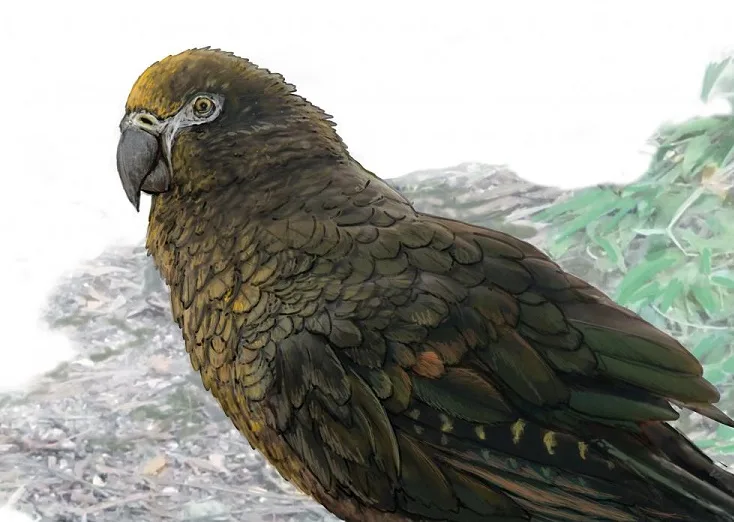
Child-sized parrot once prowled New Zealand forests

Reconstruction of the giant parrot Heracles, dwarfing a bevy of 8cm high Kuiornis -- small New Zealand wrens scuttling about on the forest floor. Image: Dr Brian Choo, Flinders University
Meet Heracles inexpectatus, now believed to be the largest parrot to have ever existed. The team of researchers from Australia and New Zealand who made the discovery estimate Heracles to be 1 metre tall, weighing about 7 kg (15 lbs).
"Until now, no-one has ever found an extinct giant parrot – anywhere," says Flinders University Associate Professor Trevor Worthy. This new fossil emerged from a site near St Bathans in Central Otago, New Zealand, an area known for its wealth of fossil deposits.
The new bird's name reflects both the researchers' surprise at finding it, and its massive proportions.

Graphic showing the Heracles inexpectatus silhouette next to an average height person and common magpie. Image: Professor Paul Scofield, Canterbury Museum
This particular Polly may not have wanted a cracker, either. "Heracles, as the largest parrot ever, no doubt with a massive parrot beak that could crack wide open anything it fancied, may well have dined on more than conventional parrot foods, perhaps even other parrots," says Professor Mike Archer, from UNSW Sydney.
Archer also notes that parrots are "very resourceful" in terms of what they eat, and says the rarity of the giant parrot's bones suggest it was higher up on the food chain. Worthy doesn't think the bird was necessarily aggressive, however, given that it had no predators. "It probably sat on the ground, walked around and ate seeds and nuts, mostly," he told the BBC. The researchers believe the big bird was likely flightless.
This ex-parrot unseats another New Zealand native, the critically-endangered kākāpo, as largest parrot ever recorded. The island nation is already well-known for its ancient giant birds including the towering moa, which could reach a staggering 3.6 metres high and weighed about 230 kg, and the moa's only predator (before humans, at least), a giant eagle with a 2- to 3-metre wingspan and 9 cm long talons.
Sources: Biology Letters | Flinders University | EurekaAlert | BBC |










